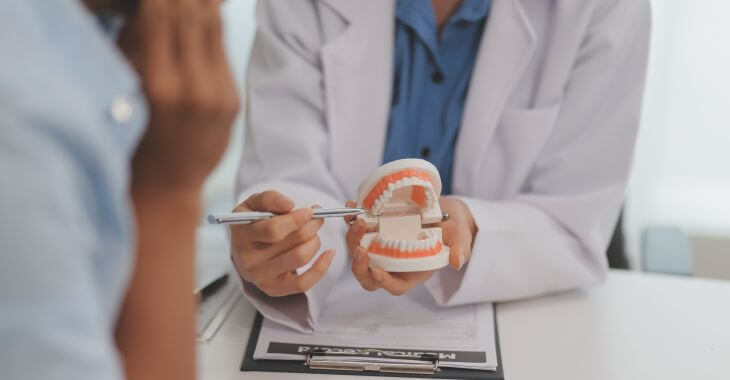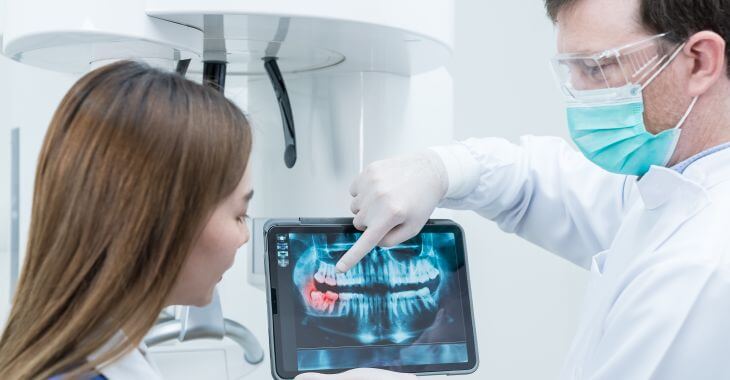Causes and Signs of Dental Bone Graft Failure

Dental bone grafts are commonly used to restore bone density in the jaw, especially before procedures like dental implants. While most bone grafts heal properly, complications can occur. Understanding the causes and signs of dental bone graft failure helps patients respond quickly to protect oral health.
It’s essential to recognize that, although failure rates are low—estimated to be between 5% and 10%—they do occur and can lead to serious complications if not addressed promptly.
What Is a Dental Bone Graft?
A dental bone graft is a surgical procedure where bone material is added to areas of the jaw with insufficient bone. This might be necessary due to bone loss from gum disease, injury, or after tooth extractions.
Grafts are made from various sources, including the patient’s own bone, donor bone, or synthetic materials. Once placed, the body begins to integrate the graft, creating a stable foundation for future dental work.
Though modern grafting techniques are highly successful, bone graft recovery problems can arise due to several factors. The graft must be kept stable, clean, and free from infection to heal properly.
When healing doesn’t occur as expected, or the graft doesn’t integrate with the surrounding bone, this is known as dental bone graft failure. Recognizing early signs is key to intervention and preservation of the area.
Common Causes of Dental Bone Graft Failure
Many factors can contribute to dental bone graft failure. Some are related to the patient’s health, while others are surgical or post-operative issues. Understanding the most common causes can help reduce the risk of failure and ensure a smooth healing process.
Causes include:
- Infection: An infected dental graft is one of the leading causes of failure. Bacteria can enter the site during or after surgery.
- Smoking: Tobacco reduces blood flow and oxygen, impairing healing and increasing the risk of infection.
- Poor oral hygiene: Inadequate care allows bacteria to build up around the graft site, leading to bone graft recovery problems.
- Underlying health issues: Conditions like diabetes, autoimmune disorders, or osteoporosis can compromise healing.
- Improper surgical technique: If the graft isn’t securely placed or stabilized, it may not fuse properly with the surrounding bone.
- Mechanical trauma: Physical disruption from chewing, clenching, or ill-fitting dental appliances can dislodge the graft.
Addressing these risk factors before and after surgery is essential. Patients should always disclose their full medical history to their oral surgeon and follow recovery guidelines precisely. Preventing infected dental graft sites starts with sterile technique and ends with diligent aftercare.
Recognizing the Signs of Failed Bone Graft
It’s crucial to monitor your healing process after a bone graft procedure. While some discomfort and swelling are normal, there are key signs of failed bone graft that suggest the healing process isn’t going as planned. Early detection can prevent the need for invasive interventions or total graft removal.
Watch for the following symptoms:
- Persistent or worsening pain: Some soreness is expected, but if pain increases after a few days, it may indicate a problem.
- Swelling that doesn’t improve: Extended or worsening swelling, especially after a week, is a warning sign.
- Pus or discharge: A clear sign of an infected dental graft, often accompanied by a foul odor or taste.
- Fever or malaise: Systemic symptoms like fever may suggest that an infection is spreading beyond the graft site.
- Mobility of the graft area: If the bone or overlying tissues feel loose or unstable, the graft may not be integrating properly.
- Gum recession or tissue changes: Shrinking or discolored gum tissue around the graft site is often linked to healing issues.
It’s also important to attend all follow-up appointments. Your dentist or oral surgeon can take X-rays to check how well the bone is fusing and spot early bone graft recovery problems. Even if you don’t have obvious symptoms, internal failure may still be occurring.
What to Do If Your Bone Graft Fails
Facing a dental bone graft failure can be discouraging, but there are often ways to correct the issue. The first step is diagnosis. Your dentist will examine the site clinically and may order imaging to assess bone integration.
In the case of an infected dental graft, antibiotics may be prescribed, and sometimes surgical intervention is necessary to clean the area or replace the graft entirely. Treatment options may include:
- Removal of the failed graft material
- Debridement (cleaning the site of infection)
- Placement of a new graft after healing
- Use of bone growth stimulators to aid regeneration
- Tissue or gum grafts if soft tissue has also been damaged
In some cases, additional healing time is needed before placing a new graft or dental implant. It’s critical to resolve all bone graft recovery problems before attempting another procedure. If smoking or health conditions were contributing factors, these must be addressed to avoid a repeat failure.
With proper care, many patients who experience a failed graft can go on to have successful corrective procedures. The key is early action and professional treatment.
Be Informed Before a Bone Graft Procedure
Understanding the causes and signs of failed bone graft procedures is crucial for anyone undergoing a dental bone graft. While failure is not common, it can lead to significant complications if ignored.

Whether the issue is an infected dental graft, bone graft recovery problems, or systemic factors interfering with healing, the solution starts with professional evaluation and intervention. Take recovery seriously, communicate openly with your dental provider, and follow all post-op care instructions.
The information provided on this website, including text, graphics, images, and other materials, is intended solely for informational purposes and should not be used as a substitute for professional medical advice, diagnosis, or treatment.




)